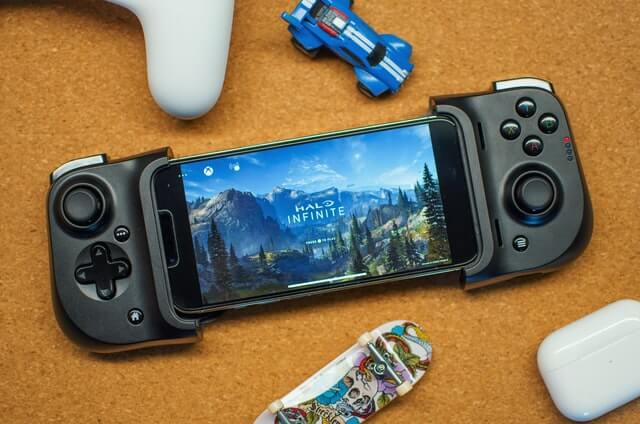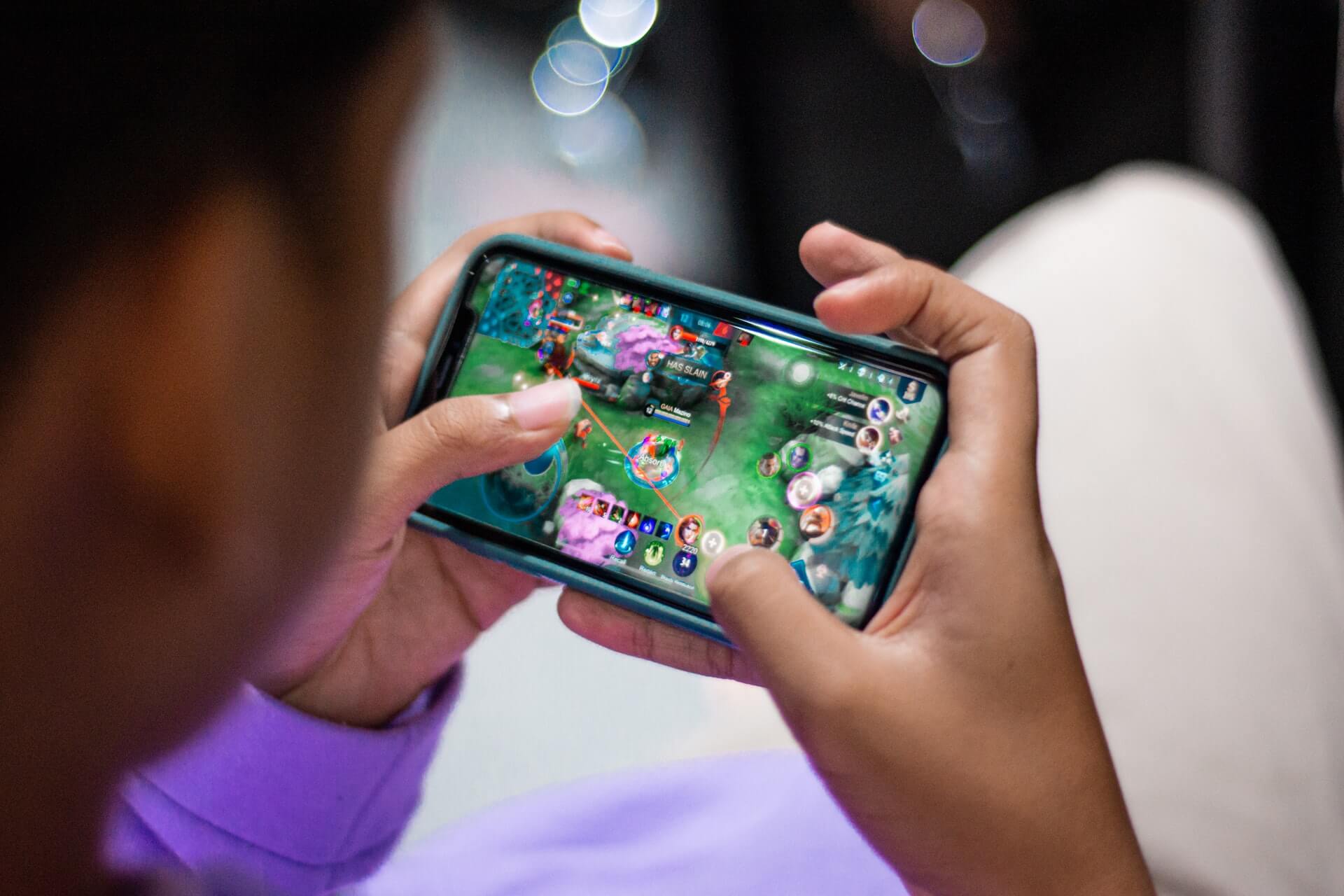Finding the right target audience for your mobile gaming app is one of the first things you should be doing even before you begin developing your gaming app. Mobile games have gained popularity since the time they first appeared. In other words, mobile games have taken the world by storm.
Less than three decades back, a mobile phone company called Hagenuk MT-2000 launched the first mobile game, Tetris, in 1994. This portable form of entertainment has evolved over the past years. The whole gaming landscape has changed for good. There are millions of players worldwide whose favorite activity today is mobile gaming.
There are around 449,497 gaming apps in the Google play store and about 288,153 gaming apps in the Apple app store as of Q1 2022. The gaming industry is huge and every year, thousands of new gaming apps are making it to the app stores. On top of it, there is fierce competition that is prevailing in the app market.
As an app developer, if you do not market your product to reach the right target audience, it will be hard for your potential app users to find your app.
In this article, you will learn how to define your target audience and learn strategies that you can use to reach out to them.
Why should you define the target audience for your gaming app?
Photo by Ryland Dean on Unsplash
Choosing the right target audience will decide so many other facets of how you will make or market the product.
Here are some of the critical factors that will get affected when you choose the correct target audience:
- UX/UI design of the app
- Mobile app features
- Monetization plan or marketing strategy
- How fast will your app scale
You can also collate the information and data of the existing customers and use the same to understand behavioral trends, which will help in increasing the efficiency of targeting. You can also create lookalike audience clusters or groups using audience segmentation tools.
How to define your target audience?
It is vital for you to define your target audience before putting in any marketing efforts. Here are some simple steps that you can follow to complete this task:
A clear understanding of the product’s value
Before defining the target audience, you need to understand your product and its functionality thoroughly. As game developers, you must go beyond the available features in the mobile gaming app.
It is vital for you to reach a point where you begin to question how your mobile gaming app will appeal to different categories of gamers. Here are some of the questions that you might get when you are at this stage:
- What is so unique about the product we are developing?
- Will our potential customers find our mobile game more attractive than other similar mobile app games
- What will make the potential user download and install the app on their mobile device?
Do not wait until your product is ready before defining your target audience. The target audience refers to users who will value the product you create or develop. It is one of the main reasons you should ask these kinds of questions even before you complete making the gaming app.
Photo by Afif Kusuma on Unsplash
As you ponder the possible responses to the questions listed above, you will quickly start to understand more clearly the tactics that you must follow to increase app downloads and how you can generate revenue.
Conduct extensive market research
Before you start to develop the app, you should do everything from your end to do extensive market research. Check the market to identify your competitors and how their gaming apps are doing. You should download your competitor’s app to see what elements you like in their app and also observe to see what their shortcomings are.
If you can identify the pain points of your competitors, you will know how to develop your gaming app so that a lot of users find it appealing. Apart from dissecting your competitor’s gaming apps, you should also plan on checking how your competitors are doing marketing and what kind of marketing efforts they are putting in to reach the target audience.
For example, you might want to check their app’s social media handles and customer service segments in the app to understand their strategy.
Demographics of your target audience
Market research coupled with data analysis will help you find your target audience. Demographics refers to a group of people you will define using various factors such as location, age range, gender, interests, etc. Here are some of the factors that will help you shape the target audience for your mobile gaming app.
Photo by Pandhuya Niking on Unsplash
Location
It refers to the whereabouts of where your target audience is living. Depending on how vast an area you want your app to reach, it can range from a small region in a big city to the entire nation. In some cases, it can refer to multiple countries or regions.
Age Range
Everything in and around the app will have an impact when you define the age range of your target app users. For example, the features you want to add to your mobile app and the overall app design will depend on this factor. Even the app monetization strategy that you will frame depends on this aspect.
Gender
Though you might want to target both genders, separating genders for user segmentation is wise. Doing this will allow you to target each of the genders that you define separately.
Device
Targeting app users by their devices is the best way to reach the target audience. For example, if your app is available only on iOS, there is no point in you targeting all devices.
Interests
It is crucial for you to know people’s interests before running ad campaigns. You do not want your marketing ad to appear to people who have no interest in mobile games. If you do it anyway, you will not have good conversions. You are going to waste your marketing efforts and budget.
Hence, this is one of the factors that should be defined before running an ad campaign. It would be best to put a lot of effort into deciding what interests your target audience will have before jotting it down. Brainstorm with your team and do some research before finalizing the interests of your target audience.
Build user personas
After you define the demographics of the potential users, the next thing you must consider is the common behavioral traits across that particular group. When you understand the income and location of a user segment, you will know how they will spend the money. You will chart down their habits etc.
Since there will be more than one user segment that you will target, you must develop different types of user personas. Once you have them ready, you should plan on creating the user journeys based on the information you have.
Apart from building user personas, you should also be working on developing psychographics.
What are psychographics?
Psychographics refers to the cognitive and psychological attributes of a customer. They reflect the values, beliefs, and goals of the target audience. Marketers use demographics along with psychographics to understand the purchasing habits of the consumers.
Demographics identify your target audience, but psychographics define why a potential customer will buy a product. As a marketer and app developer, you need both demographics and psychographics to understand the target audience better.
How will you know if you selected the right target audience?
Once you build the target audience, how will you know if they are right? Here are some things that will help you identify this aspect:
Track the performance
Use analytics tools to check and track the performance of your ad campaigns. Check what is working and what is not. Use key metrics such as ROAs, installs, retention rates, session time, churn, etc., to see how you are fairing.
Use a data-driven approach to connect well with your target audience. If you are not getting the best results, you must check what went wrong. You can scale your gaming app beyond your imagination using a data-driven approach.
Discover the ad network’s targeting capabilities
Your ad network might have outstanding targeting capabilities to help you reach the right target audience.
Facebook ads, for example, allow you to connect with potential users even when you do not use the filter based on the product you are marketing. But, when you use the filter, you can target a particular group of people based on their gender, interest, location, etc.
A/B testing
It is wise to do A/B testing to check which target audience group is working for you. Here are some of the things that you must plan on doing to decide which group is performing well and is appropriate for you to target:
- Create a hypothesis before running an ad campaign.
- Once you develop the hypothesis, you should plan on running ads to two different audience groups and check the user behavior.
- Check the analysis and results to see if your hypothesis is accurate.
- Make necessary modifications before rerunning the ad.
- Once you have the new information, you can plan on rerunning the ad to see if you are moving in the right direction.
Other factors you should consider to define and retain your target audience
Dynamic updates based on feedback
Forge a responsive gaming experience by dynamically shaping your game through player feedback. Embrace an iterative development model that assimilates player insights. Swiftly address concerns, integrate desired features, and roll out updates that mirror player expectations. This agile responsiveness fosters player loyalty and positions your game as a living entity, consistently evolving to meet player desires.
In-game analytics for user behavior
Navigate the gaming landscape with precision by delving into in-game analytics. You should unearth player behavior patterns, preferences, and pain points. This data-driven approach unveils the roadmap to enhance user experience.
Tailor your game’s mechanics, levels, and rewards based on comprehensive analytics, ensuring each player feels a personalized connection. By deciphering the intricacies of user behavior, your game evolves as a finely tuned orchestration of player delight.
Localized marketing campaigns:
Forge a more profound connection by embracing localized marketing campaigns. Tailor your messaging to resonate with diverse cultural nuances and preferences. Whether it’s language, imagery, or themes, customization fosters a sense of belonging among players. By understanding regional gaming landscapes, you expand your reach and create a more immersive experience, solidifying your game’s presence in various markets.
Explore influencer collaborations
Embark on a dynamic journey by collaborating with gaming influencers. These digital tastemakers wield immense influence, connecting authentically with gaming communities. You should partner with influencers whose vibe perfectly aligns with your game’s essence.
Their endorsement injects credibility and excitement, translating into heightened interest from their followers. This influencer-driven approach transforms players into advocates, fostering a vibrant community that amplifies your game’s impact in the gaming sphere. And, of course, to reach the right target audience.
In Conclusion
Before developing and launching your gaming app in the app store, you should understand your target audience. You have to define the target market by describing who your potential user is and what their interests are.
Once you build the user personas, you need to do hypothesis, A/B testing, and track performance to see what is working for you and what’s not. If something is not right, you can pause the marketing campaign and make modifications before rerunning the ad.






